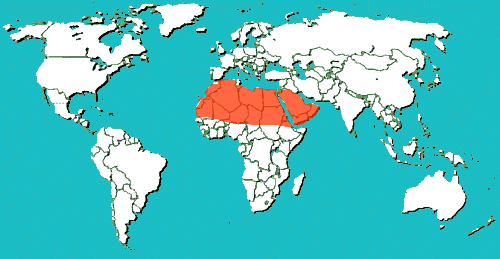
Circle the area on this map

C. The Gobi is the largest desert region in Asia. It covers parts of northern and northwestern China, as well as southern Mongolia.
D. Antarctica is a desert composed of a thick ice sheet and 2 percent barren rock. The Arctic is the second largest desert. The Sahara is third in overall size but the largest hot desert.
B. A Great Basin Bristlecone Pine nicknamed "Methuselah" is the oldest known non-clonal organism still alive, at the age of about 4,841 years old.
D. The Atacama Desert is a virtually rainless plateau in South America, covering a 600-mile strip of land on the Pacific coast of South America, west of the Andes mountains. The Atacama desert is, according to NASA, National Geographic and many other publications, the driest desert in the world.